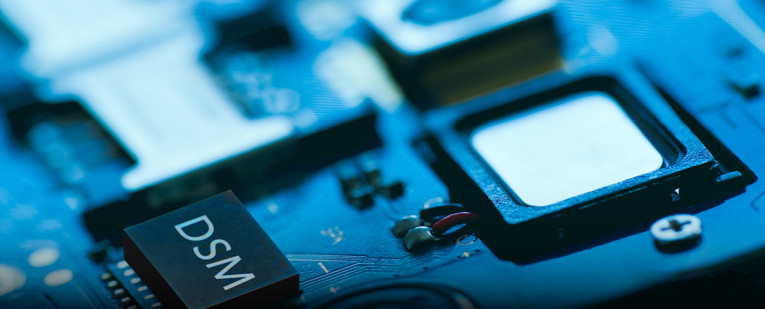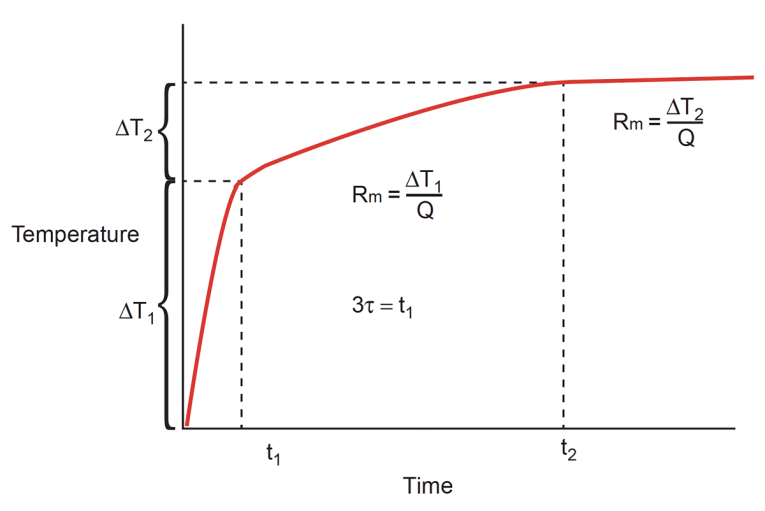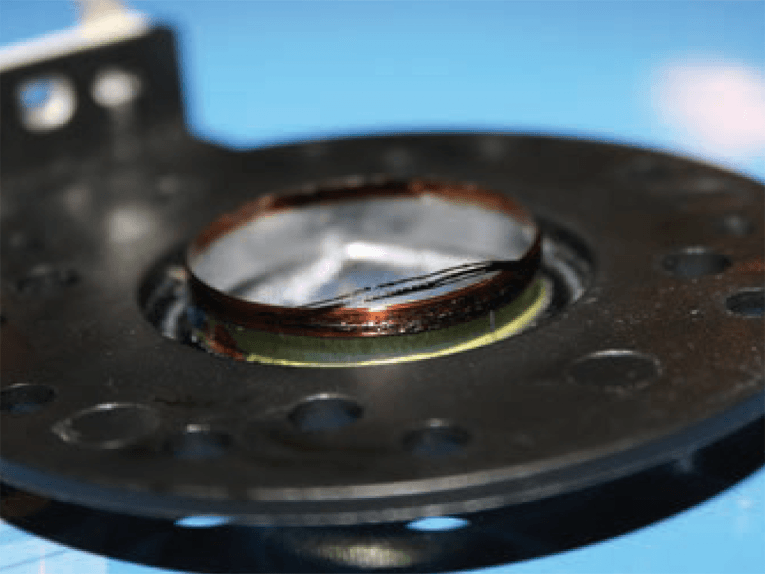
The implications are that mobile consumer electronics are going to play louder and sound better than ever. The latest version of these mobile devices sounds surprisingly clear and loud. Even experienced loudspeaker engineers are taken aback by the apparent break in the rules of physics through the magic of signal processing and psychoacoustics.
But before deciding how best to protect loudspeakers from destruction, we want to explain what causes loudspeakers to fail. Sometimes audio aficionados are guilty of “cranking up” their loudspeakers, only to end up with a “blowout.” Loudspeakers typically fail for either mechanical or thermal reasons.
There is an invisible line where above a certain frequency band, the voice coil’s heat causes failure modes. Below that frequency band, damage can also occur due to excessive physical movement. The loudspeaker’s size generally indicates where the failure mode transition is located. Excursion issues usually begin at a higher frequency in smaller loudspeakers. Many failures are actually a byproduct of a loudspeaker operating at too high an excursion level, which results in high temperatures that compromise the integrity of the parts and adhesives.

Thermal Failure
Many people use the term “burned out” when referring to blown loudspeakers. Burning out the speaker is not always the cause of the failure, but let’s take a look at what happens when you “toast” your tweeter (or woofer). To begin, loudspeakers are not efficient transducers, so if you send 100 W of audio signal power to a loudspeaker, you may get one acoustic watt out of it. Of course, large horn concert sound speakers might reach 10% efficiency, perhaps slightly more, still most amplifier power becomes heat. Like an incandescent blub, a loudspeaker mostly generates heat.
Microspeakers in mobile audio products are typically a bit less than 1% efficient. So with the loudspeaker’s voice coil primarily working as a heating element, the temperature will increase to a level where more heat is generated than the loudspeaker can dissipate. This is not news to loudspeaker designers. There are dozens of techniques to pull heat away from the voice coil, including the use of aluminum bobbins, anodized black and vented pole pieces for forced air cooling, placing heatsinks on magnetic structures, or thermally conductive magnetic fluids in the voice coil gap, and so forth.
Nevertheless, most manufacturers do not have the budgets for their speaker designers to implement all the heat-dissipating techniques. As the power is increased, the voice coil temperature rises. Figure 1 shows an initial rapid temperature rise (T1) as the coil itself heats up, followed by a more gradual rise (T2) as the heat is dissipated through the surrounding air and into the loudspeaker’s magnet and frame. The voice coil wire has a coefficient of expansion, with aluminum and copper clad aluminum coils expanding more than copper coils.
As the temperature rises, the coil expands but the top plate’s inside diameter does not. The coil then scrapes against the top plate and is one major cause of failure. To make matters worse, the adhesive used to hold the voice coil together loses its strength at high temperatures and even a minor coil rub against the top plate can dislodge some of the coil windings. At that point, the loudspeaker would fail.
There is also the possibility of power compression. As the voice coil gets hotter, its impedance rises sometimes to more than double the nominal room temperature impedance. The loudspeaker then draws less power and the output level shifts downward. As a result, the audio system’s operator often increases the amplifier gain to compensate, which in turn burns out the voice coil (see Photo 3). The audio signal’s duty cycle is an important but often overlooked issue.
Live music and speech have crest factors, where the peak levels may be 10 dB higher than the average power. Voice coil heating is not as rapid when the program material has a wide dynamic range. Because the duty cycle is not as high, the loudspeaker’s natural heat dissipation can keep up with the heat the amplifier signal generates in the voice coil. When limiters and compressors are used, or in the case of MP3 or radio sources, the crest factor is far lower and the average power to the loudspeaker is much higher, resulting in more heat being generated.

We should mention, a speaker system’s apparent loudness can be far greater when compressor/limiters are used and still not exceed a loudspeaker’s excursion limits. Microspeakers have limited heat dissipation, yet signal processors for their applications use extreme compression to increase apparent loudness.
In our next article, we will discuss how the most sophisticated adaptive speaker processors monitor and protect speakers from thermal overload even when the crest factor is small (i.e., when the entire signal continuously runs at its highest capacity) like those commercials that seem much louder than the program. While the Federal Communications Commission (FCC) limits the peak levels, there are no regulations for packing it all into the maximum level.
A totally different thermal problem can occur in loudspeakers with neodymium magnets. Depending on the neodymium’s specifications, there is a temporary loss of speaker sensitivity as the magnet is heated to its limits. A more serious condition is the permanent loss of magnet strength. Most pro loudspeaker neodymium magnets experience problems around 130°C. For most pro voice coils, the adhesives can tolerate 180°C peak thermal excursions. The magnet may reach 130°C under these conditions.
In extreme cases, the loudspeaker may lose a couple decibels of sensitivity after high-power use due to power compression. It may also lose another couple decibels due to a lower magnetic strength in the gap. Once the loudspeaker cools, the permanent loss may only be a tenth of a decibel or less. But consider that over time, the constant thermal cycling occurring in concert sound speakers will result in speakers that are 5 to 6 dB lower at the season’s end! With pro sound loudspeakers, there is a tendency to use 150°C neodymium. But this more conservative design approach would be reflected in the loudspeaker’s price as neodymium’s price increases


The lower the frequency and the higher the power level, the more the loudspeaker moves in response to the signal. There are secondary considerations for non-sealed back chamber designs (e.g., vented and transmission line speaker systems), but in general, excursion increases as the frequency lowers. Depending on a loudspeaker designer’s decisions, several different loudspeaker problems could occur as excursion increases. For example, if the voice coil’s clearance is not adequate, it could hit the magnet back plate, or typical two-point suspensions (i.e., a spider and a surround) could run out of movement or lack adequate coil centering at their limits.
With the microspeakers used in smartphones, laptops, tablets, cordless house phones, and Bluetooth speakers, the surround is the only suspension element. While commonplace, the single-point surround suspension found in most microspeakers is too distant to efficiently control the centering in the voice coil gap. The diaphragm tends to be shallow and prone to flexing and breakup. As a result, the coil rocks and scrapes, generating a lot of buzz and other spurious noise. The coil scraping eventually results in open or shorted voice coils.
Sometimes the failures do not immediately occur, as voice coil expansion and cooling can result in stress and eventual failure. Spiders and surrounds lose their compliance and are unable to retain their original characteristics, resulting in mistuned enclosure alignments. There are no shortage of possible problems!

Ferrofluids — magnetic particles suspended in synthetic oil — are often used to further increase thermal power handling and to enhance coil centering at higher excursions. Ferrofluids have a lower thermal resistance than air in the voice coil gap. Air is a great thermal insulator, but it is not really what you want around the voice coil. Aside from higher peak thermal power handling, the magnetic fluid’s “liquid bearing” effect is beneficial, especially when it is used between the pole piece and the coil’s inside diameter (see Photo 5).
Ferrofluids have been used in tweeters for decades. More recently, higher-excursion microspeaker designers have started using ferrofluids in speakers for docking stations, televisions, Bluetooth devices, and even some noise-canceling headphones and hearing aids. aX
This article was published originally in audioXpress, August 2013.





